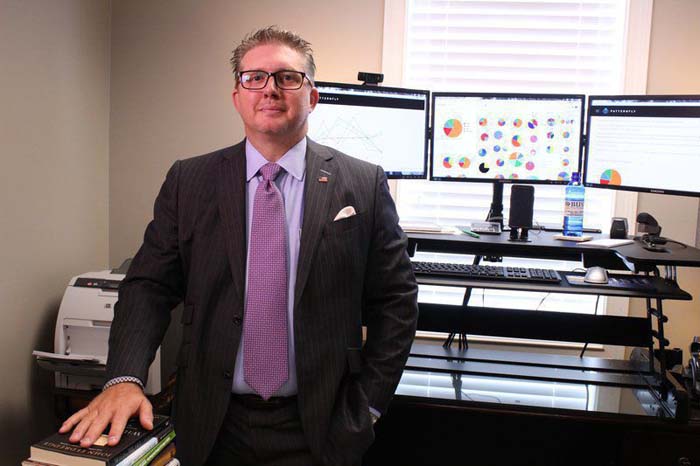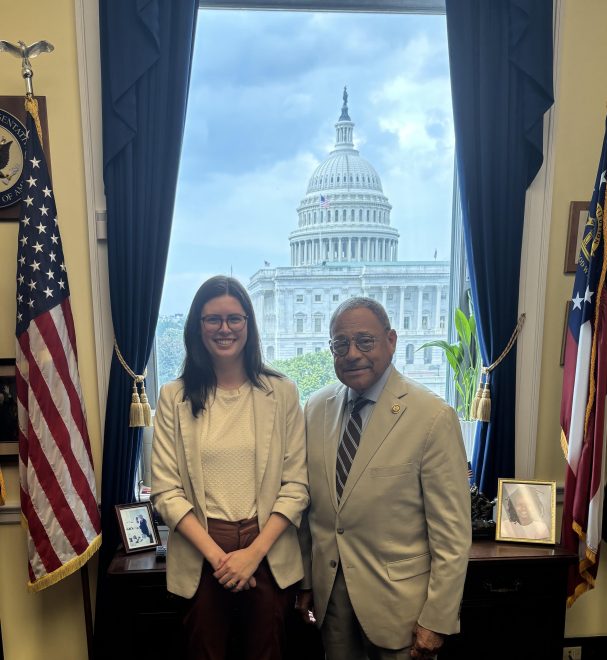After the Crash: Banks seek middle ground on regulations
Published 4:00 pm Sunday, July 29, 2018

- Stacy Bush, president and founder of Bush Wealth Management in Valdosta, said more could still be done to help local banks, but warned against returning to bad habits that led to the Great Recession.
TIFTON — Before the 2008 financial crash, getting a loan could not have been easier.
Banks across the country handed out mortgages like candy, requiring little oversight or accountability.
Trending
After the crash, new regulations were established to prevent another financial disaster. The largest of the regulations passed in July 2010; it was the Dodd-Frank Wall Street Reform and Consumer Protection Act.
Now, eight years since Dodd-Frank, the economy is healthy and stable again.
However, according to bankers and financial experts across the SunLight Project coverage area – Valdosta, Moultrie, Thomasville, Dalton and Milledgeville. – the effects of the Great Recession may have subsided but the broad regulations put in place to prevent another crash still constrict smaller community banks.
Weathering the storm
Til Culbreth, Thomasville National Bank group vice president, said the bank was fortunate to ride out the recession.
Many small banks around the SunLight Project coverage area were not so lucky.
Trending
Culbreth said banks such as TNB were not the primary cause of the crisis but were still impacted.
“It was mainly caused by these financial institutions throughout the country that did not know their borrowers,” he said.
For example, a “megabank” in California loaned money to someone in South Carolina and had no documentation or verification of income, Culbreth said.
But community banks know their borrowers, he said. Their managers live in the community, grew up there, graduated there, shop at the local grocery store and own homes there.
Culbreth said Dodd-Frank “cast a net” over all banks — even the community banks that know their customers.
“The crisis caused most banks to change their standards for loaning money,” Culbreth said. “The net effect of that is it made some of their best customers un-bankable.”
Because of TNB’s financial strength, the bank could work with customers who were struggling financially, Culbreth said.
“Ironically, many of those customers have recovered fully and are some of our bank’s best customers,” he said.
TNB follows the regulation, but does its best to insulate customers from government bureaucracy, he said.
Finding a happy medium
Stacy Bush, president and founder of Bush Wealth Management in Valdosta, said the overall goal of Dodd-Frank was to keep big banks from getting too big.
“The goal of it is to make sure banks have more capital in place,” Bush said.
More capital would make it harder for a bank to fail, but also slows down how fast a bank can grow, he said.
Slowed growth is fine for a bank the size of a small country, but can be damaging to a local bank with a little more than $1 million in capital.
Bush said he believes local banks were caught in the mix with “too big to fail” banks.
J.J. Arias, Georgia College economics professor, agrees with Bush.
“The purpose of Dodd-Frank was to try and prevent another financial crisis, and it mainly did that through a lot of new regulations,” Arias said. “The problem was that a lot of those new regulations applied to small banks, medium-sized banks and large banks. Obviously (the Great Recession) had a lot of causes, but in terms of banking, it was mainly the large and very large banks that were responsible.”
Many regulations required banks to report more detailed information about their clients and placed a considerable burden on some of the country’s smallest institutions.
Bush said local banks know their communities and should have the discretion to work with their clients. The best example of the burden placed on smaller banks is the hoops people have to jump through to get a mortgage, he said.
“Getting a mortgage is a process of collecting required documents like bank account statements, investment statements and that sort of thing,” Bush said. “If you don’t have every little ‘i’ dotted and ‘t’ crossed, it can be a pain.”
For example, he had a client who wanted to buy a house. The client’s income had increased and the client had the money available to purchase a home, but he missed filling out “one little box” and was denied the mortgage, Bush said.
“The amount of regulation you need to go through today is unbelievable,” he said.
In the years following Dodd-Frank, community banks had to devote full-time workers to government compliance, a task that had traditionally been done with part-time labor.
For Derek Williams, president and chief executive officer of Century Bank & Trust of Milledgeville, he and his employees were suddenly doing a lot more reporting on the compliance side.
“We were having to provide a lot more data and a lot more information to the government, and we were not allowed to make independent decisions based on what we knew about a customer,” Williams said.
In an effort to roll back some of the new lending and mortgage requirements, Williams and other members of the national small banking trade association and the Independent Community Bankers of America took their grievances to elected state officials.
“A lot of small banks couldn’t afford to pay the compliance staffs they needed to keep up with it, so as a trade association, we began lobbying at the state and national level, basically, as soon as Dodd-Frank came out,” Williams said.
He said they told officials the small banks didn’t cause the problem.
“We weren’t doing crazy stuff. We were taking local deposits and giving local loans in markets that we knew and understood. Small banks make well over half of small business loans because big banks typically don’t deal with them, and small businesses have been the basis of our recovery,” Williams said.
Bush said regulations on smaller banks were not as cumbersome before the Great Recession.
He said getting a mortgage pre-2000 required about 10 or 20 percent of a payment up front and proper documentation such as proof of employment and the ability of the applicant to make regular payments.
Then, as the country moved closer to the financial crash, the burden of looking into loan applicants to find out if they qualified was handed to other entities, Bush said.
“(These entities) would just process mortgages,” he said. “They came into the idea that … you didn’t have to show anything. They would just write you a check and that was the candy phase.”
The economic collapse soon followed.
Paul Hamilton, a Valdosta lawyer and chairman of the economic development & taxation policy committee for the Valdosta-Lowndes County Chamber of Commerce, said government overreacted when it passed Dodd-Frank.
He said it went from one side of the pendulum where everything was “going wild and crazy” to the other side where “all of the money seemed to dry up.”
Banks were hesitant to loan anything because of the fear they might miss something and be penalized, he said.
Such caution can hurt local economies and prevent new businesses from opening and new buildings from going up.
“We need to find a happy medium,” Hamilton said. “I’m not saying that there is no need for regulation. Things were out of control. We were giving too much credit to people who did not qualify. What I believe and what a large part of the business community believes is that we went too far.”
Course correcting
When President Donald Trump signed a Dodd-Frank rollback bill into law earlier this summer, the new bill eased several regulations on small and medium-sized banks, including a relaxing of reporting requirements for small bank loans and mortgages.
Hamilton thinks the rollback is a step in the right direction toward finding a more equitable middle ground, and he has heard from community members that things have improved.
“We need to get to a place where community banks can spend less time dealing with audits and red tape and more time working with their customers to meet their needs,” he said. “The community banks know where that spot is better than anyone.”
Williams agrees with Hamilton, saying Dodd-Frank was an overreaction and it put handcuffs on small banks such as his institution.
“It radically changed the way we deal with our customers,” he said. “The thing that makes small banks unique is our ability to sit down with a customer and deal with that individual. We know them, we’ve had experience with them, we know their businesses, and we probably know their families. You hear a lot in community banks that it’s a relationship, not a deal, and it really is.”
Although the rollback removes harmful barriers on small banks and financial institutions, Professor Arias said the bill can be streamlined even further.
“I think what the rollback did was good,” he said. “It gave relief to the small community banks that I think will help local economies. I believe that the most effective regulation is regulation that’s straightforward and simple.”
Arias said the problem with Dodd-Frank is it’s a little too complicated. When regulations are complicated, the regulators always lose because the big banks can find their way around things.
For a bank the size of Ameris Bank, a southeastern bank with more than $5 billion in assets, Dodd-Frank increased Ameris’ responsibilities and standards, according to the Ameris Bank, headquartered in Moultrie.
This provided an opportunity to enact more oversight protection for its customers, according to a statement from Ameris.
Explaining what was positive in the legislation, Ameris noted studies have found that Dodd-Frank improved financial stability and consumer protection within the United States and helped strengthen investor protection. The consumer protection reforms created uniform standards for the industry.
Even with the rollback of regulations, research has shown consumers are more optimistic about the stability and dependability of banks and will take advantage of the more traditional services offered by banks, according to the Ameris statement.
“The rollback will enable new efficient, yet effective, financial regulations to help foster economic growth that can benefit our customers,” according to Ameris.
Mitch Sanford, executive vice president and senior credit officer at First Bank of Dalton, has been involved in banking in the Dalton area for about 30 years. He said the Dalton economy has fully recovered from the Great Recession, with one major caveat.
Things have changed.
“The mortgage underwriting conditions are different. They have probably become more lenient in the last 18 to 24 months, but they are not the same as they were before the Great Recession,” Sanford said.
He didn’t say if the change was for better or worse.
According to economists, Sanford said, the Great Recession ended in 2012, but locally, it was probably 2012 before they started seeing movement again.
Bush said more could still be done to help local banks, but he also warned against returning to bad habits and people losing interest in how banks are regulated.
“People should care if they want their children and grandchildren to get out of their house and be able to buy their own someday,” he said. “If you don’t want your child living in your basement or outhouse until they’re 35, you need banks to be able to lend them some money, so you can kick them out.”
Thomas Lynn is a government and education reporter for The Valdosta Daily Times. He can be reached at (229)244-3400 ext. 1256.





